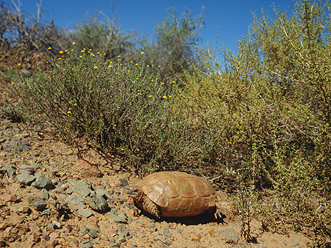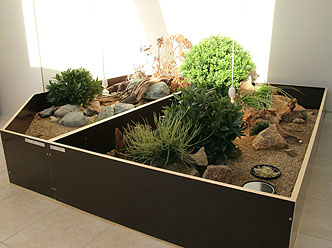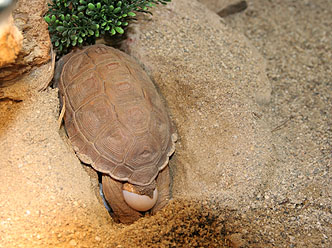
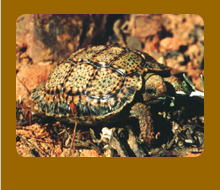 |
|
Homopus femoralis Description Homopus femoralis is the largest dwarf tortoise, growing up to 17 cm. The carapace has a (light or dark) brown or orange colouration, with dark pigmentation on the scute margins. In some specimens, especially old individuals, the dark pigmentation may lack so that the shell is uniformly coloured. Males do not have concave plastrons, and buttock tubercles are present in both sexes. Females produce clutches that consist of several eggs, probably up to three.
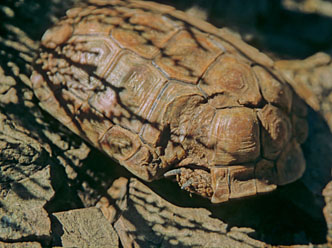 Homopus femoralis with shell damaged, probably caused by road traffic. The species occurs at high altitudes on the inland plateau of the Eastern Cape, northwards to central Free State and Kimberley, eastwards to the border of Lesotho. Relict populations occur along the, relatively humid, old escarpment edge in the Karoo (Murraysburg to Sutherland). Most of the range receives summer rainfall. Homopus femoralis prefers mountain grassveld, bushveld, and appears intermediate between H. areolatus and the remaining, rock-dwelling, dwarf tortoises in their requirement of rocky terrain. While the tortoises usually occur in rocky areas, they may not depend on crevices during their activity season in summer. Homopus femoralis is the only dwarf tortoise that is likely to hibernate, under rocks, in burrows, or in dense vegetation. This species has not yet been studied thoroughly.
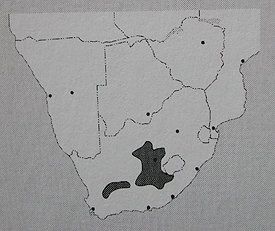 Distribution range of Homopus femoralis (from Branch 1998). In contrast to statements in some tortoise books, H. femoralis can be kept successfully in captivity. However, there have been very few serious attempts. The studbook on H. femoralis contains a reproducing founder population. A caresheet is available. Further husbandry information can be found in the annual reports of Dwarf Tortoise Conservation.
Top |


